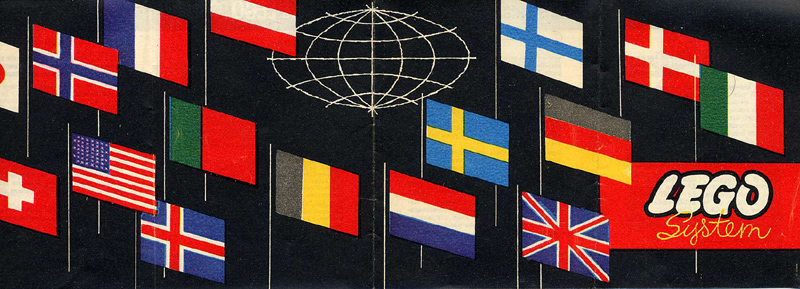
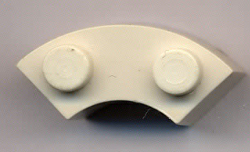 |
 |
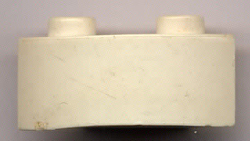 |
This was the original version of the 1x2 90º round brick, better known as "90º macaroni brick". Only seen in white with uncut skirt. But there had to be a cut version and indeed the skirt is thick but thins towards the base, as happens in the early cut versions of this brick.
No LEGO script on studs. LEGO "dogbone" logo inside. There is no clear mold number although there is an unreadable linear marking under the logo (not visible in the figure).
The studs are full. Inside the brick there are vertical burrs towards the ejector pin marks under the studs.
This first version is very rare and I have only seen this single brick. At this time, when the 2X4 module was still the rule, there was no immediate apparent utility for a round brick and, given its several imperfections, including the arched edge apparent in the lower image, this may be no more than a trial run from a provisional short-lived mold.
NOTE: The round 90º brick was one of the mainstays of the LEGO Mosaik introduced in 1955. All bricks used in the LEGO Mosaik toy had the "LEGO" script on top of the studs and the decision to mark them so, may have been the cause for this mold to be soon superseded by the next one. This particular uncut version could not been used in the Mosaik system.
LEGO script on both studs edged (not parallel). Studs full. Walls thick, outside wall thins towards the base. Ejector pin marks under the studs.
The studs are not hollowed and because of this, when the molding cycle is too swift the upper stud surface caves slightly in.
Mold number inside ("1" to "6" were seen).
NOTE: These bricks were made with and without the skirt cut. So were the larger 1X4 round 180º of which this may have been the first version. Those without the cut could only be mounted atop other bricks.
The brick was used with the construction system in white, red and transparent (see a parts box here) but there seemingly were blue and yellow runs exclusively for use with the Mosaik toy.
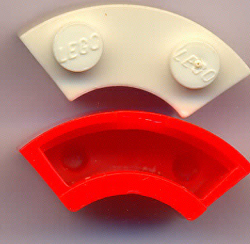
Edged (converging) LEGO script on both studs, as above.
Pip on top one of the studs (this is the only early Lego brick with this characteristic).
Studs hollow, with a diameter of circa 3mm; smooth hollow edges. Walls thick, outside wall thins towards the base. The studs are now hollow from the inside, so as to allow for a faster molding cycle. The hollow has a diameter of circa 3.0 mm.
Mold number inside (numbers from "4" to "27" seen).
NOTE. This is a very unusual brick on several counts, including the pip on a stud, the regular hollow edges (that usually characterize later bricks) and the imperfect base finish (not seen in the image). For a brick with such high mold numbers, it is surprisingly rare.
Parallel LEGO script on the studs, upside down when the brick is is the position as on the side figure.
Studs with a 3.0 mm hollow, as above, but the edges are rugged as in 2X4vs05 and the other first Pat.pend. molds.
Interior wall thick, but exterior wall is now thin and the same width from the top to the base.
Mold number inside ("1" , "2" or "3").
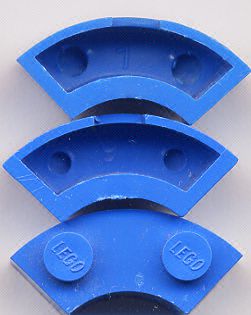
As previous version but the thickness of the stud wall has been increased and so the stud hollow has a smaller diameter than in versions Vs03 and 04 above. This correction was introduced in the whole line of LEGO bricks at about this time, probably to address a resistance problem deriving from too thin stud walls.
The image on the left side compares vs05 ( brick on top ) with vs06 (second and third bricks).
In the bricks seen, the "LEGO" script was rotated 90º from the position in vs04 above, but it is not known whether this is a general rule.
Mold codes seen: "1" to "6".
The version above is the last to interest us. The next version had a circular ring around the "LEGO" script on the studs and the mold reference was made up of a letter and a number, as in other contemporary bricks.